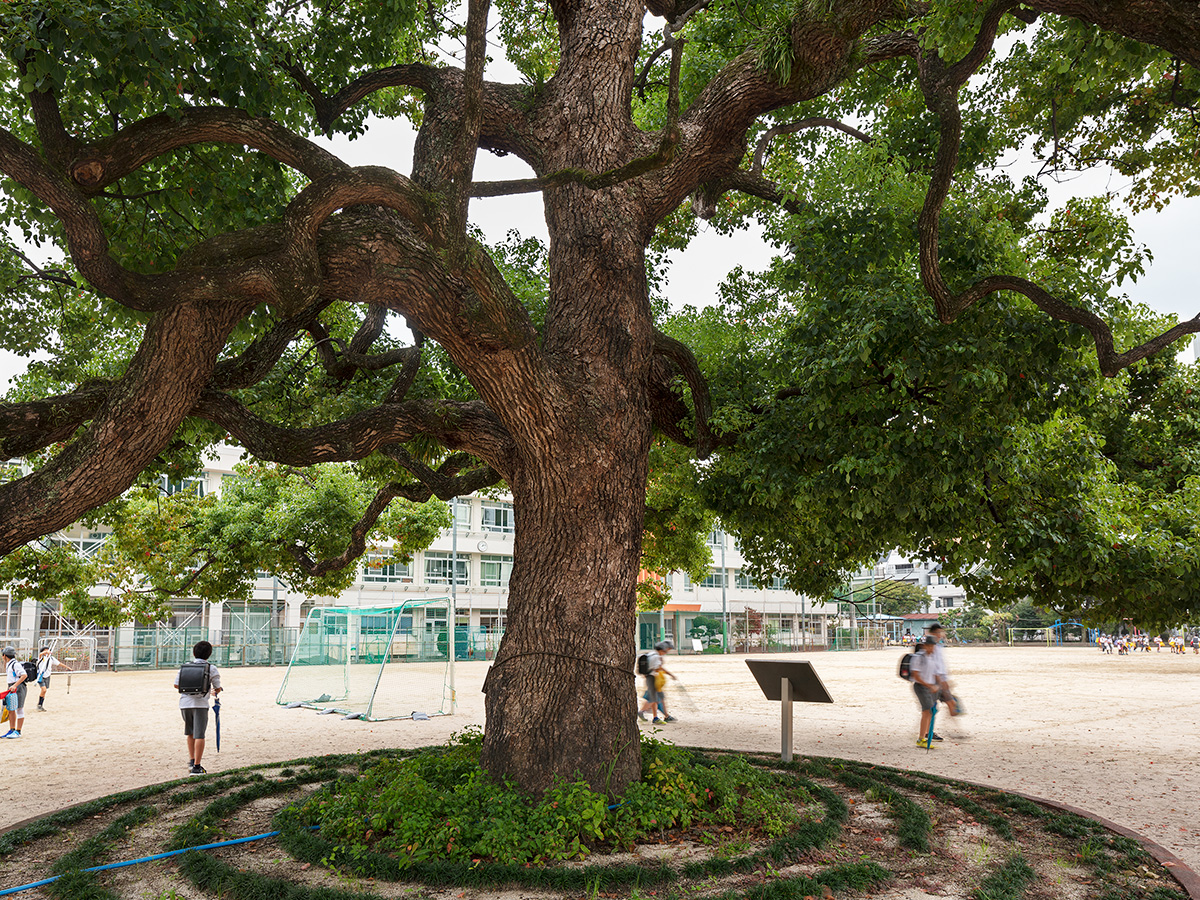Documenting atomic legacies in Japan

Photo: Katy McCormick, Camphor Tree, Misasa Elementary School, 1850 Meters from the Hypocenter, Hiroshima, Japan.
The after effects of the atomic bombings of Hiroshima and Nagasaki are still present in the two Japanese cities nearly 75 years later. Markers can be found in both cities, documenting the impacts of bombings, including plaques cataloguing the trees that remarkably survived the destruction.
For more than a decade, photographer and Ryerson School of Image Arts professor Katy McCormick has been photographing the traces and memorials of those catastrophic events, including the trees that survived, resulting in an ongoing multi-part project called The Ash Garden.
She's found herself drawn back to the topic of the bombings time and again, a documentary subject that initially caught her by surprise. She'd gone on a trip to Japan in 2008 and attended the commemorations of the bombings in both cities and found herself deeply affected by that experience.
"I thought I knew this history, but of course being there, actually visiting the cities and then going to these very emotional commemorations, really impacted me in ways I hadn't anticipated. It actually became a project for me during that first visit, as I started photographing the sites and trees right then," she said.
She's returned three times since, with another trip planned in the coming months, beginning a new phase of the project centred around the A-bomb trees, the students who care for many of them and a dialogue with survivors of the bombing and their descendants. To date, the project includes a film entitled 11:02 — Land of the Second Sun about the cherry trees planted in honour of Kayoko Hayashi, a 15-year-old girl who was killed during the bombing at Shiroyama Primary School in Nagasaki; and a book, Hiroshima Under a Rain of Ruin, which offers a walk through Hiroshima that includes historical documents and survey photographs of sites, along with photos of the contemporary city. She has also focused on the hibaku jumoku, A-bombed trees that survived to sprout again after the bombings despite belief that nothing would grow for 70 years.
Many of the trees stand in elementary school yards and are tended by students who learn about the bombings over a six-year peace education. Their lessons often start with the trees as a way to introduce the topic of the human catastrophe, survival, rebuilding of the cities, and hopes for world peace and the abolition of nuclear weapons.
"Given the horror of war, it's easier to begin speaking about it with a tree that is burnt and seemingly dead that comes back with new growth after the catastrophic damage," said professor McCormick.
She is working towards launching her work in an exhibition and publication of The Ash Garden in time for the 75th anniversary of the bombings in 2020.
Professor McCormick is a member of the Atomic Photographer's Guild and the Documentary Media Research Centre, now located in The Catalyst at Ryerson. Her work may be seen on her personal website (external link) and at the website of the Atomic Photographers Guild (external link) .
Funding for the first phase of The Ash Garden project was provided through a Creative Fund grant from the Office of the Vice-President, Research and Innovation.